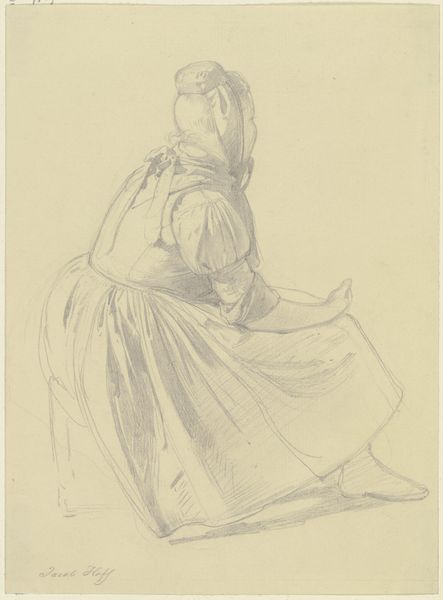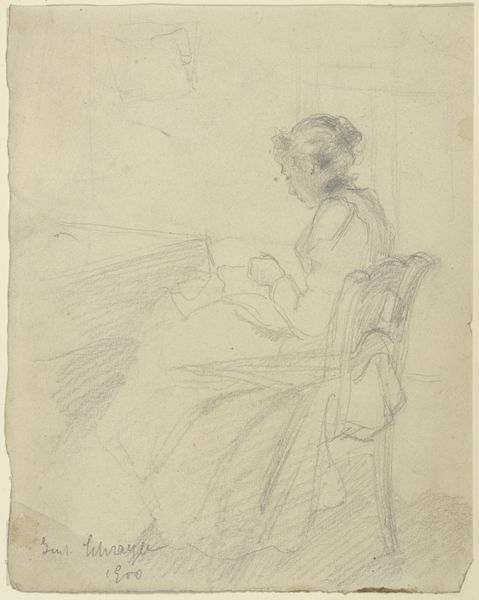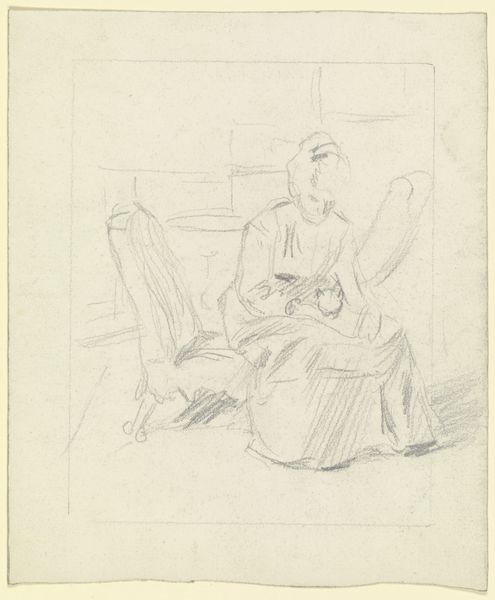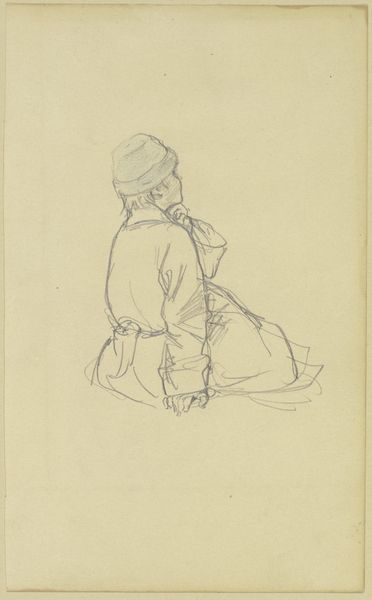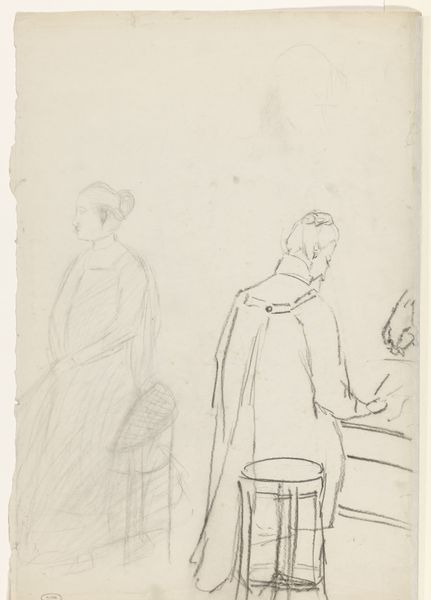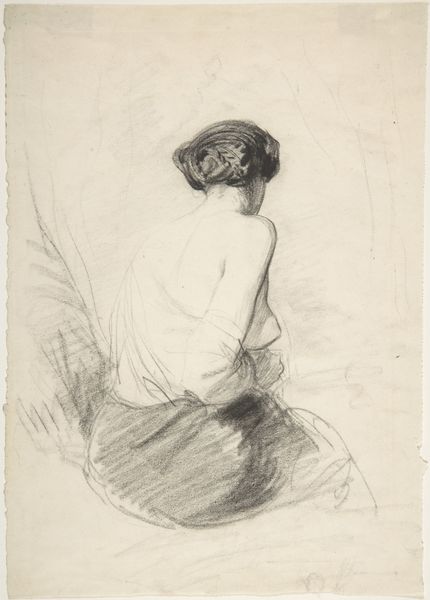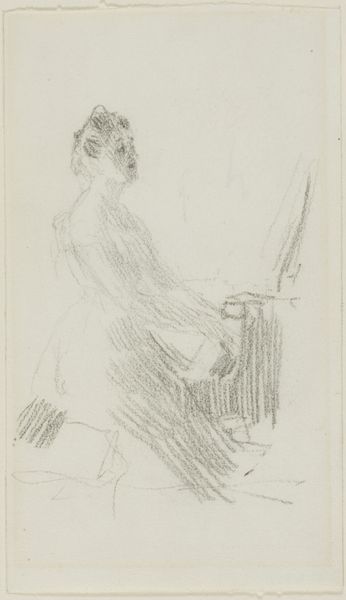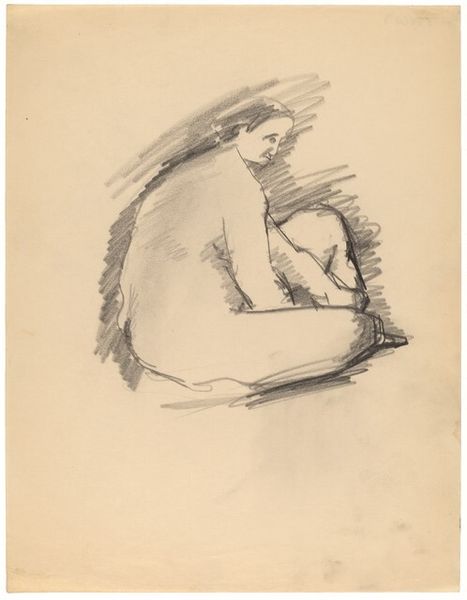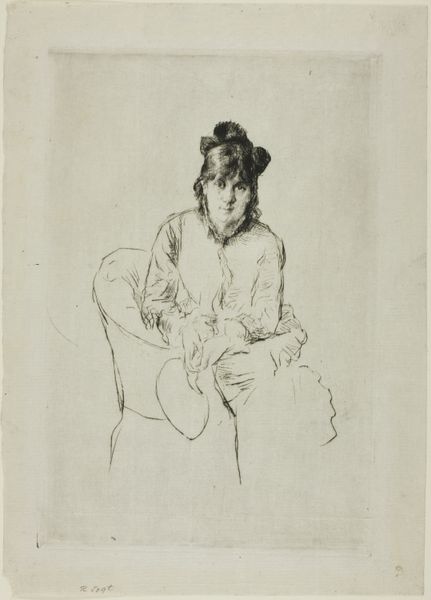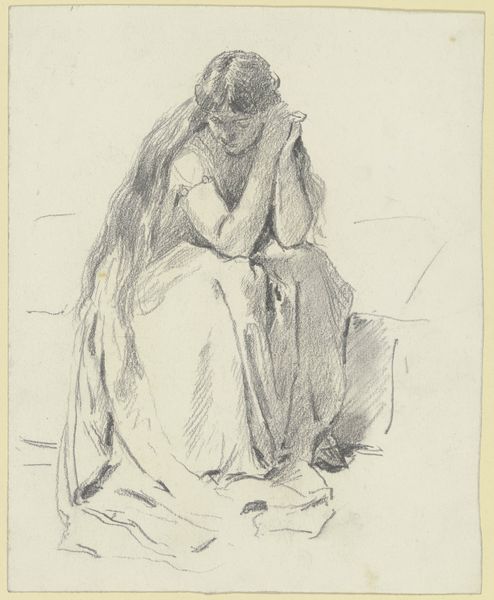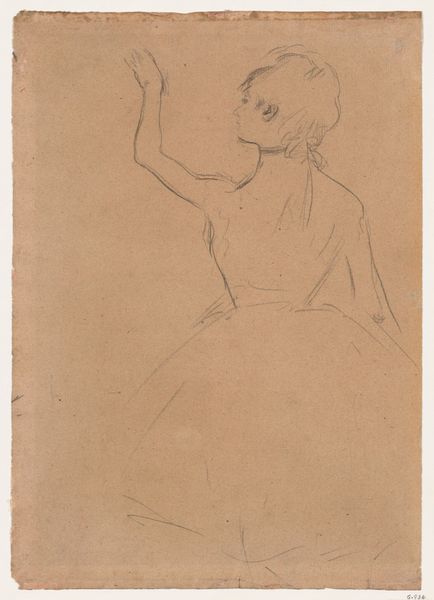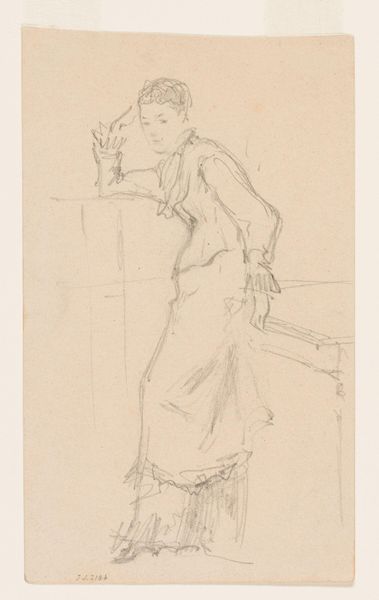
Copyright: Public Domain
Editor: This is "Rückenfigur einer sitzenden Frau", or "Back View of a Seated Woman," a drawing by Gustav Schraegle, around 1899. It’s made with pencil on paper, and the overall feeling I get is one of quiet contemplation. What do you see in it? Curator: I see a reflection of the changing role of women in society at the turn of the century. While on the surface, this drawing might simply depict a woman sitting, its significance lies in how Schraegle chooses to portray her. Consider: why her back turned to the viewer? Is it a sign of defiance, a claiming of her own space, or perhaps an invitation for the viewer to contemplate her inner thoughts, separate from societal expectations of display? Editor: That's an interesting point. It does make you wonder what she’s thinking. Is it common to use back poses during that time? Curator: It became a recognizable Romantic trope. But its revival, such as in Caspar David Friedrich's work, and then in Schraegle's time, it signaled new perspectives, especially regarding women's presence. Museums then began collecting these kinds of more intimate portraits, shaping public taste and acceptance of female introspection. So, think about who could afford to commission portraits and what messages those works sent to the upper class. Editor: So, the art world influenced the portrayal of women just as society influenced the art world. Curator: Precisely! Editor: That adds a completely new dimension to what I initially saw as just a simple portrait. Thanks! Curator: And that's exactly the point – to consider the layers of influence at play when interpreting art!
Comments
No comments
Be the first to comment and join the conversation on the ultimate creative platform.
